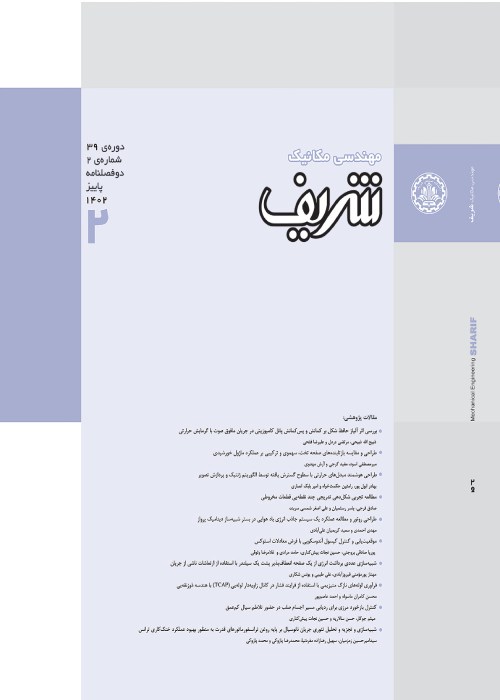SIMULATION OF GRAVITATIONAL EFFECTS IN ONE-DIMENSIONAL OIL RESERVOIRS USING BLACK OIL MODEL AND DOMINANT WAVE METHOD
Black oil model is widely used in simulation of oil reservoirs. In this model flow in porous media consists of three chemical components (oil, gas and water). These components can form at most three phases (liquid,
vapor and aqua) which are homogeneous mixtures of components separated by fluid interfaces. The black oil model considers compressibility of fluids and mass transfer between vapor and liquid hydrocarbon phases. The black oil formulation used here is based on the Trangenstein and Bell (TB) matrix formulation. This formulation is particularly useful because it remains the same in both saturated (three-phase) and under-saturated (two-phase) cases. This formulation consists of a parabolic pressure equation together with a set of hyperbolic mass conservation equations for components. The mentioned system of equations is linearly degenerate due to complexity of flux functions which leads to singularity of Jacobian matrix.
When gravity effect is included in the governing equations, the non-convexity of flux functions is increased, and as a result, at some points the wave speed of system vanishes. Most of explicit methods for solving hyperbolic
conservation equations encounter difficulties in such situations and produce non-physical expansion shocks which contradict second law of thermodynamics. To deal with this kind of expansion shocks, numerical methods use additional artificial diffusion. In this sense, methods with inherent additional dissipation like Rusanov-based central schemes are less prone to expansion shocks. However, these methods usually produce too much dissipation and cannot provide acceptable accuracy, especially near shocks. On the other side of spectrum, upwind methods can capture shocks and discontinuities with proper accuracy. These methods can however lead to expansion shocks more frequently than central schemes. Besides, the upwind methods require characteristics decomposition that is usually computationally costly.
In this paper, an improved numerical method, the so-called Dominant Wave method, is used to simulate flow in porous media using the black oil model. The numerical method is characterized as a one-wave method for which there is no need for characteristics decomposition. Moreover, the numerical method uses a finite volume flux approximation and is formulated as a Rusanov-based central type scheme.
In order to prevent expansion shocks, Hartens entropy correction is used. This correction adds artificial dissipation just at the points with nearly zero wave speed. In this work, a homogeneous, one-dimensional reservoir is used to study the performance of the dominant wave method in simulating saturated and
under-saturated flows with and without gravitational effects.
- حق عضویت دریافتی صرف حمایت از نشریات عضو و نگهداری، تکمیل و توسعه مگیران میشود.
- پرداخت حق اشتراک و دانلود مقالات اجازه بازنشر آن در سایر رسانههای چاپی و دیجیتال را به کاربر نمیدهد.


